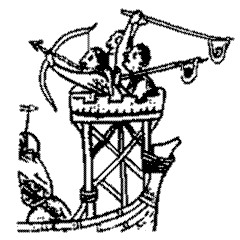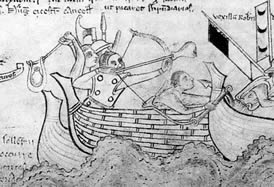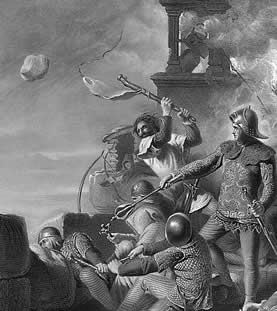Staff-sling
From Slinging.org Wiki
The staff-sling, also known as the fustibule, fustibal or fustibalus, functions like a man-powered trebuchet. The device consists of a staff usually three to five or six feet (91.5cm to 152.5cm or 183cm) in length that has a sling attached to the top of the staff.
The operator of the staff-sling will hold the staff at or near the bottom, swinging it from behind the shoulder over the head in an overhand sort of cast. The release cord will let go and release the stone or other ammunition. The staff gives the thrower extra leverage.
The exact origin and age of the staff-sling are unknown. The first historical source to mention it is the Roman military writer Publius Flavius Vegetius Renatus in his book De Re Militari. Vegetius lived in the fourth century AD. He mentions the weapon as standard military equipment and gives the range for practice:
- "The archers and slingers set up bundles of twigs or straw for marks, and generally strike them with arrows and with stones from the fustibalus at the distance of six hundred feet."
The staff-sling could hurl projectiles at greater ranges, but six hundred feet appears to have been a good estimate for a sensible range in a military engagement.
The staff sling has been used throughout history to hurl especially large or heavy missiles. It is known for being able to hurl larger or heavier ammunition than the sling, though without the range of the sling.
The Staff-Sling in Naval Warfare
A good number of medieval images show the staff-sling being used by ship crews to hurl missiles, some of which appear to be incendiaries or simple grenades. This image shows slingers in Byzantine service shooting from a ship:
This is an image from the battle of Sandwich (1217) showing a naval slinger hurling a flask (most likely containing a flammable liquid):
The Staff-Sling in Sieges
Staff-slings can be used to lob big stones, grenades and other weapons, which makes the weapon very useful in sieges, as the following image shows:



